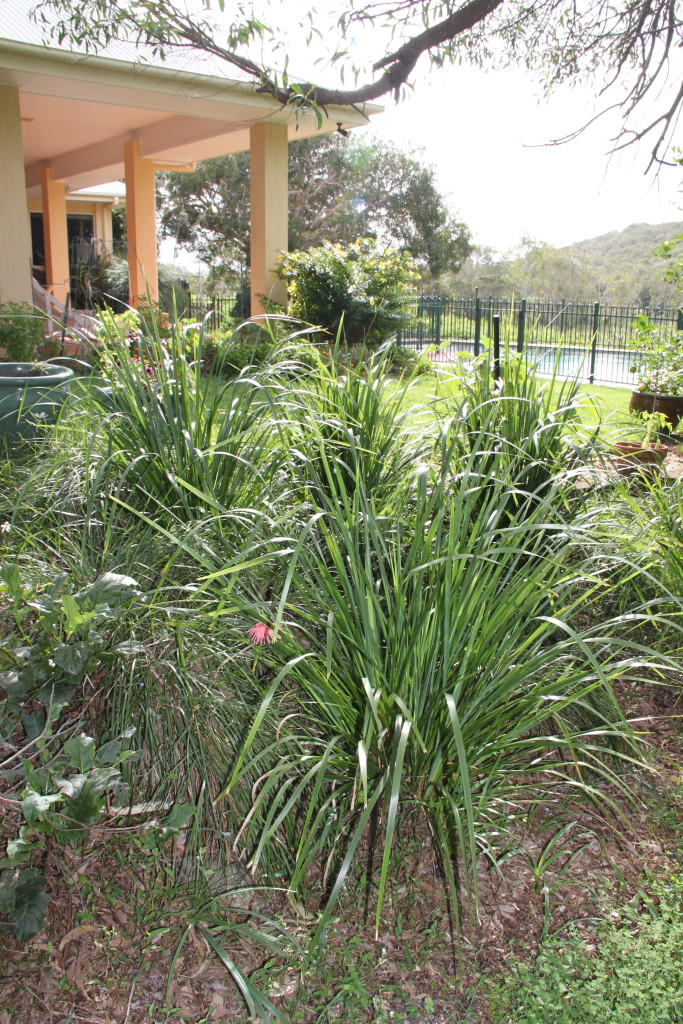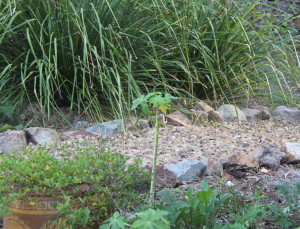
Note the graceful weeping habit of this young Lomandra hystix planted to stabilise a small embankment. This plant will double in size when it reaches maturity.
If you want a robust, no fuss clumping plant, Creek Matt Rush (Lomandra hystrix) is ideal. Growing to 1.5 m. it is usually found along creek beds, and has shiny strap like leaves, with a weeping habit. Lomandra hystrix has tiny scented flowers in Spring and Summer. It works beautifully as a feature plant or as a mass planting, and is often used in public spaces.
One common use for Lomandra is as a ground stabiliser on slopes. The deep root system acts as a soil binder, this but also makes it difficult to remove once established, worth bearing in mind before planting. Lomandra hystrix will tolerate full sun however it does better in part shade. It will also tolerate periods of dry but will not look its best. Some gardeners trim back the leaves in spring.
Lomandra longifolia is a hardier, more sun and drought tolerant plant that is widely distributed in Australia. It is now available as tubestock in commercial nurseries. (Ask if you can’t find it.)
I personally prefer the Lomandra hystrix as it has a more graceful look. It is less common than Lomandra longifolia. According to the Australian National Herbarium, Lomandra hystrix occurs in two disjunct areas, in Northern QLD and in South East QLD from Nambour to Northern NSW. So If you source Lomandra hystix from a local native nursery, you will have a rather special lomandra.
This article is part of our Gardening with natives series.


Hi Judy,
Not sure if you still check the blog. But i have around 25 lomandra longifolias all around the house. And never been trimmed since planted (4 to 5yrs now). Can you please give me any tips on how to remove them. I have tried chain saw, garden scissors but could only get to the soft leaves the hard straws are pain to cut. I totally need to get rid of them.
Kind Regards,
Koresh
Hi Koresh,
I usually warn people at the native nursery where I work that Lomandra longifolia grows bigger and tougher than most people think. Once established it is extremely difficult to pull out. The only way I know is to grub it out with a pick, a huge job if you have so many. You need to get the deep root out, otherwise it will reshoot. A similar smaller and easily divided plant that grows locally on the Sunshine Coast is Lomandra confertifolia.
Best wishes
Judy
Hi Judy, I just bought a 10 year old house on Bribie Island, with an established garden of around 10 Lomandra Longifolias, which are planted along a short fence line (small yard). I don’t know what possessed the previous owner to plant them. I have had problems cutting them (likewise with a chain saw and hedge cutter, etc.). I have them down to a crew cut. What poison, i.e. ‘Roundup’ family, can I use to kill the plant and root, prior to digging them out?
Cut them of& at ground level or slightly higher and spray with roundup.